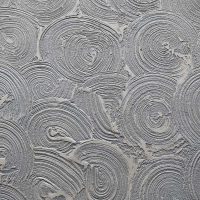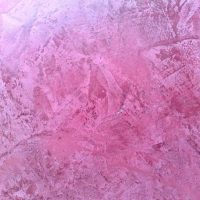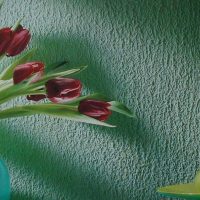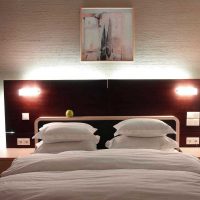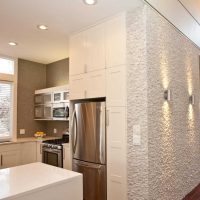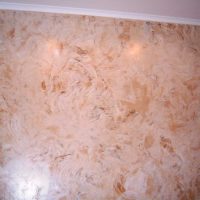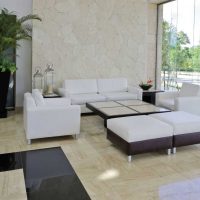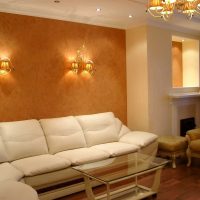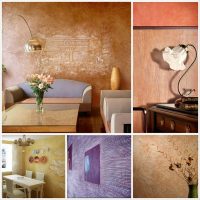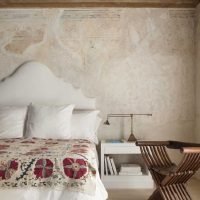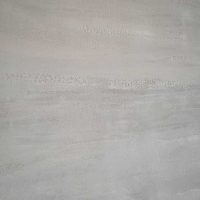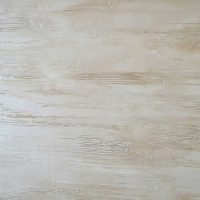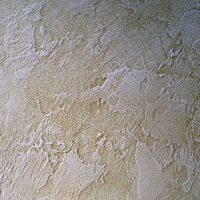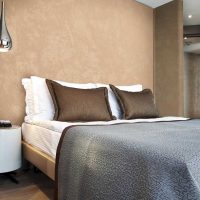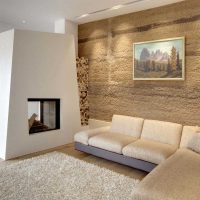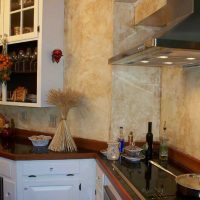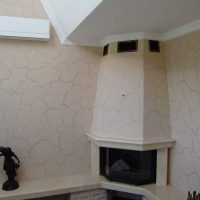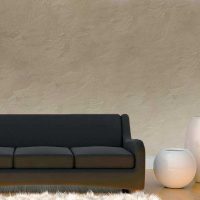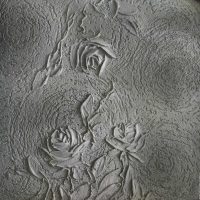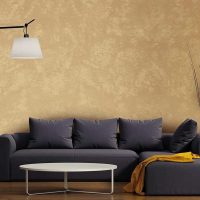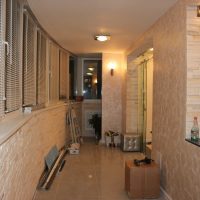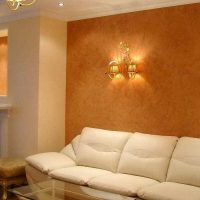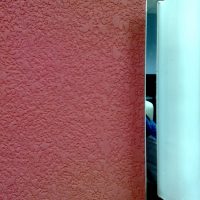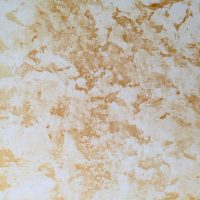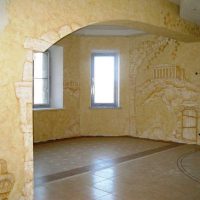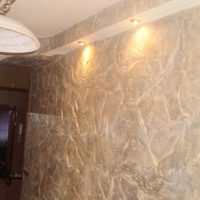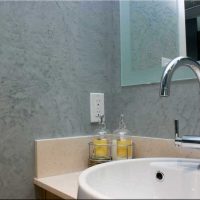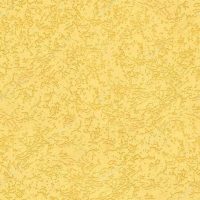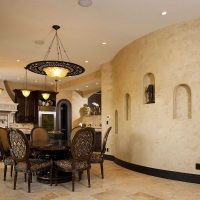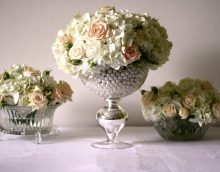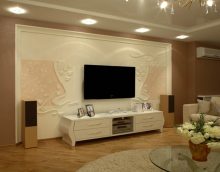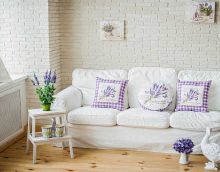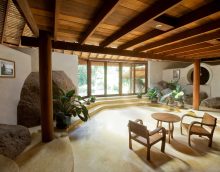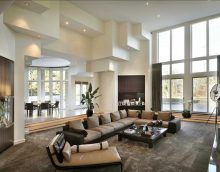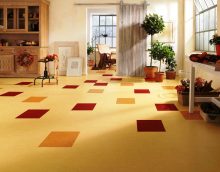Unlimited possibilities for decoration: decorative plaster on the walls of the interior
During the repair, many act out of habit - they buy traditional finishing materials, and at the end they are dissatisfied with the result. But how many do not change paper wallpaper or painting, it is impossible to get the effect that decorative plastering of walls does with your own hands. This is a chance not only to transform the interior, but also to realize bold dreams using your creative potential. There are a lot of relief options obtained through a mixture for wall decoration, which can be used to draw entire panels with a roller and spatula. Having familiarized yourself with the basics of technology and gained a little practice on a control surface, it is easy to create a unique decor in the hallway or living room.

Such a huge butterfly on the wall will not go unnoticed
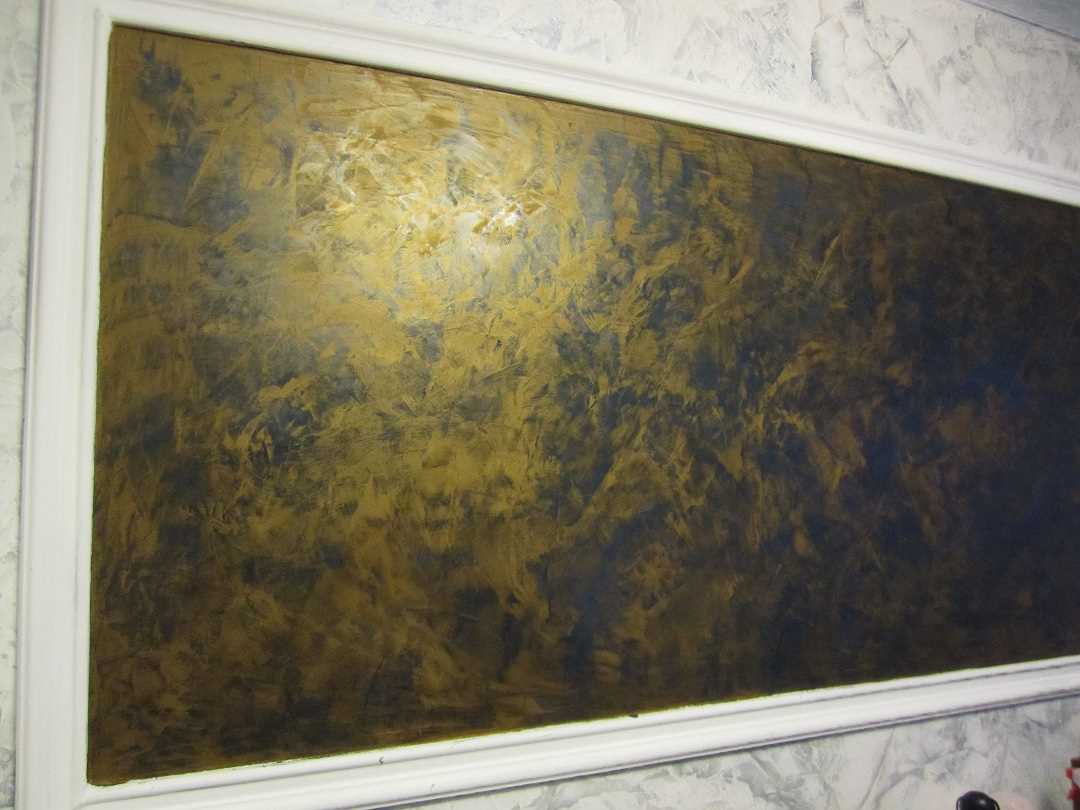
Even the simplest strokes of a spatula as a result will look like a work of art
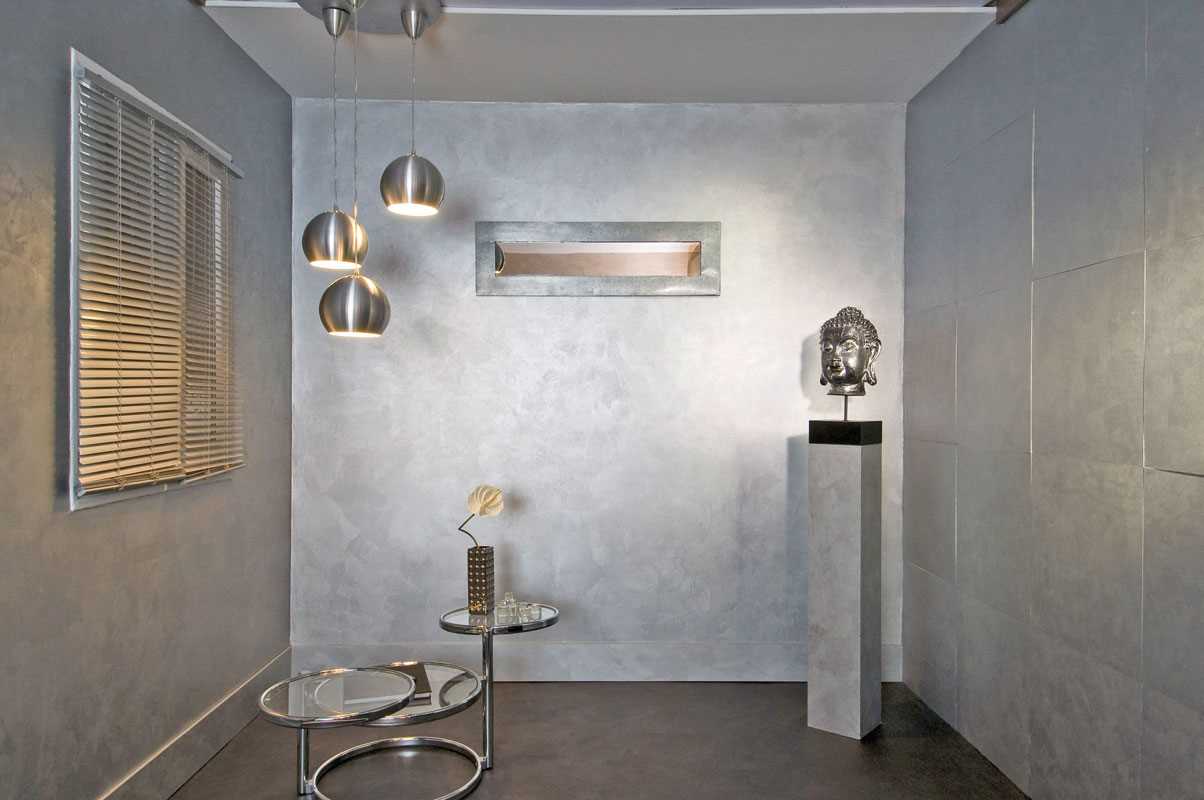
The harmony of color in the room will charge you only with positive energy
Content
What is necessary for decorative plastering with your own hands?
For decorative plastering you need a special dry mixture, but you can make something unusual from ordinary putty with fillers and pigment. Having mastered how the base is applied and the “bark beetle” texture or other pattern is formed, you can make interesting patterns, in accordance with the design plan. Do-it-yourself putty decor will save money and hide small defects in coatings. Whatever the choice, plaster is classified as:
- interior;
- front.
Both varieties are suitable for effectively decorating apartment walls with stucco. But a facade-resistant mixture can have chemical components that allergy sufferers are sensitive to. Therefore, before buying it is important to carefully study the instructions and see the composition.
Interior (for interior decoration) plaster is produced on a different basis:
- Silicate.
- Mineral
- Acrylic
- Polymer.
- Silicate-latex (with silicone).
Each has its own texture options, for example, “fleece” or “bark beetle”. If you want to work with a repeating relief, you need to purchase special nozzles on the roller that squeeze a special rustic background on the wall. Gypsum plaster can “sculpt” art panels, but it quickly sets, so they work quickly and confidently.

This method of wall decoration is durable; plaster can last for decades.

This type of wall decoration is sure to arouse interest among guests.
Each variety is applied and formed in a special way, some surfaces can be additionally painted. The most expensive is Venetian plaster, it is applied in layers, creating decorative walls "marbled" with your own hands. For such work, you need a professional who owns the technology, and the surface requires additional processing with interior wax. But you can prepare the foundation in accordance with all the rules, and then invite a specialist - this is much more economical than hiring a whole team of finishers.
The paste is prepared strictly in accordance with the recipe described on the package. This ensures optimum consistency, coating thickness and drying time.Otherwise, the solution will set too quickly, the desired pattern will not work. You can check the results in a small area.
The decor of the walls of textured or decorative plaster is applied with a spatula to the prepared base, leveling with a grater, but without much effort, otherwise you can "pull it". Different patterns are created from the same composition if a suitable tool or texture is used. For example, applying pressed foil, maple leaves or faux fur to the solution, it is easy to obtain a spectacular cladding.
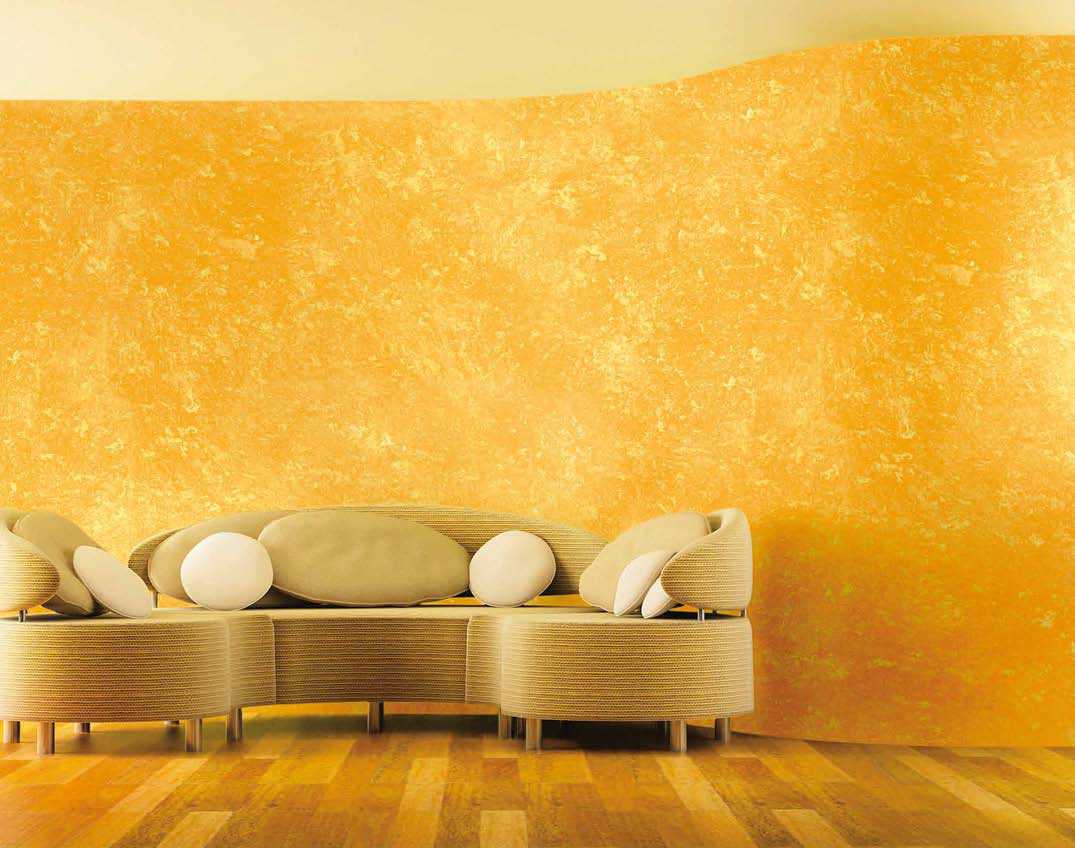
Walls in bright mustard color will only make you smile.
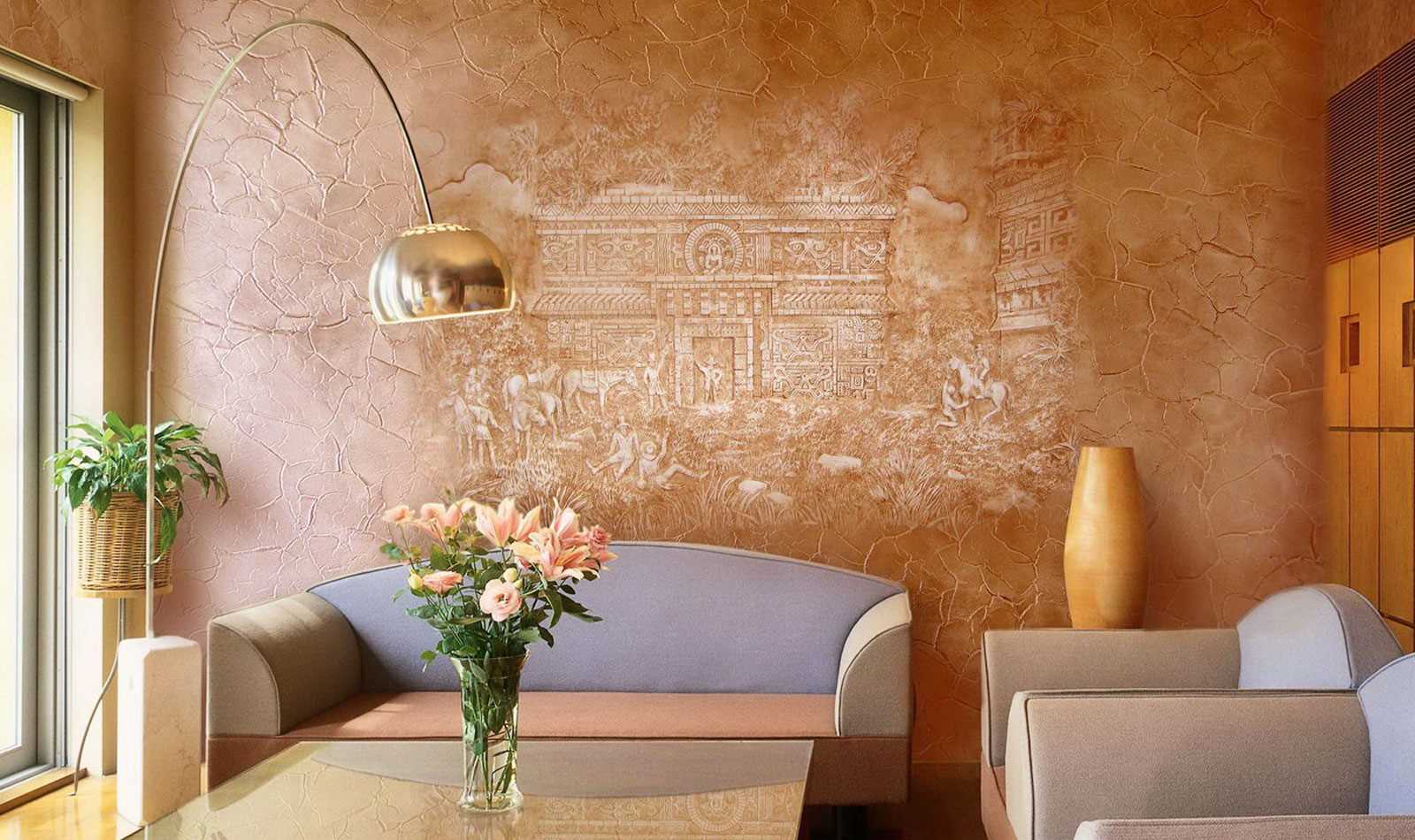
Textured plaster with a pattern will complement the interior of the room

A wide variety of types and colors makes it possible to make the room perfect
The multi-stage process of decorating walls with putty on your own involves the steps:
- work planning;
- procurement of materials and tools;
- preparation of room surfaces (cleaning from wallpaper or other unstable coating);
- creation of a starting base;
- applying plaster;
- finishing decoration or painting.
Using the capabilities of decorative plaster, it is easy to create an exclusive interior design that cannot be repeated by anyone from the immediate environment. But to create something new is better on the basis of what has been tested in practice for years. For today, ready-made and dry mixes are produced, but it is proposed to use plaster or putty, which are also suitable for creating a magnificent relief.
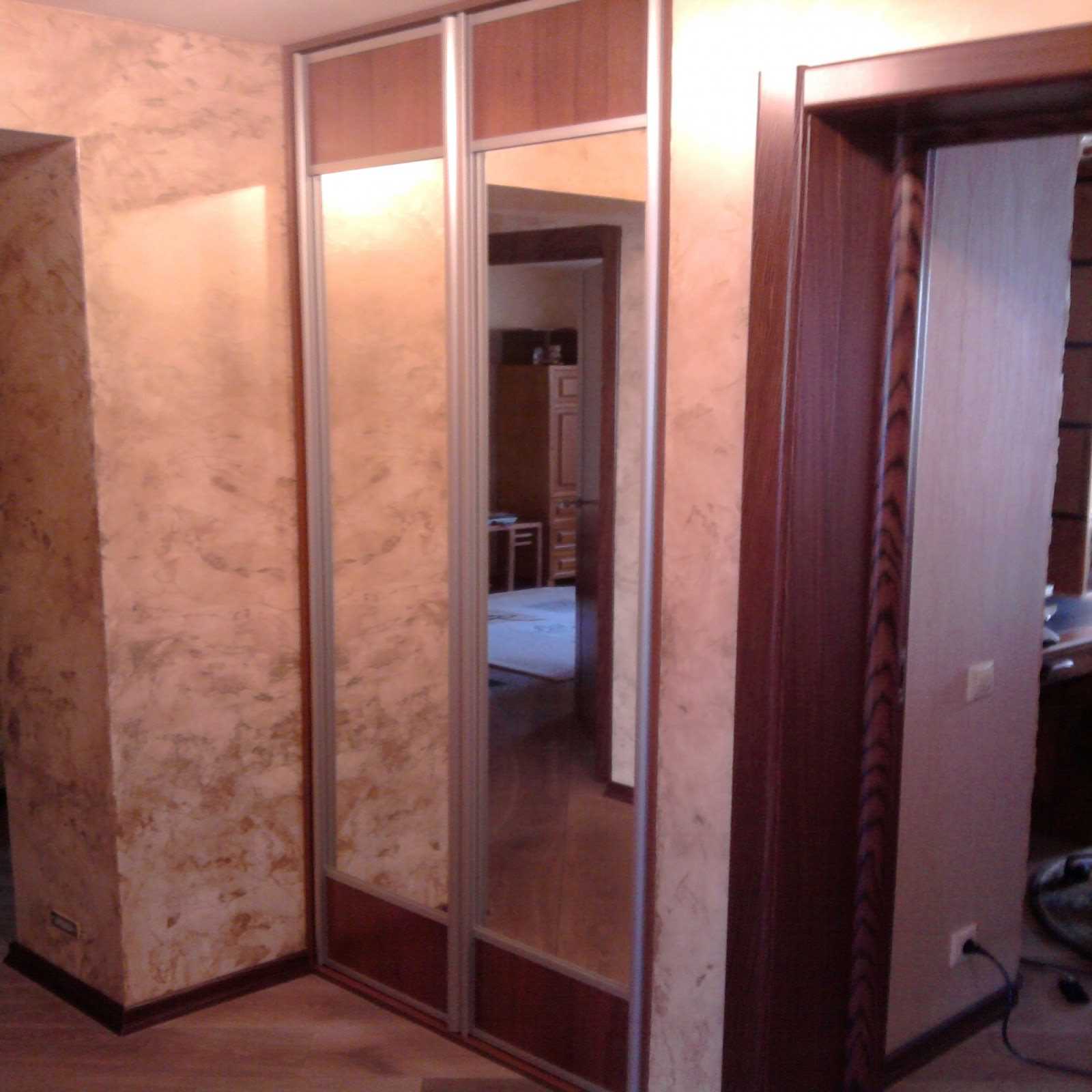
This way of decoration will be in perfect harmony with the furniture.
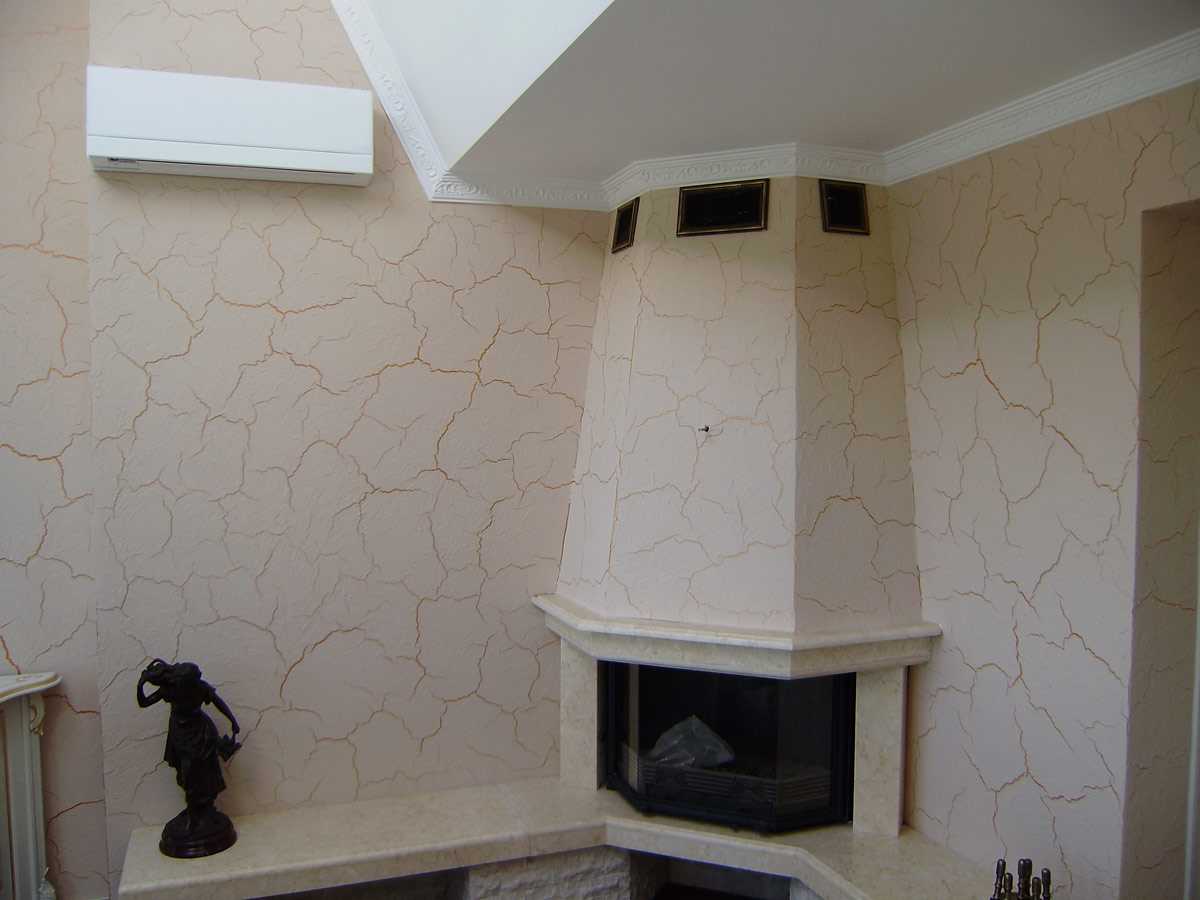
An excellent solution would be to finish the walls and fireplace with decorative plaster
Advantages of plaster decorative plaster
In several rooms, it is easiest to create a decor with one plaster with your own hands, and you will get a different relief (working with a different tool). Then, even with the usual finishing mixture, you can get different surfaces.
For a greater variety, pigment or “color” is added to the mixture. It is necessary to observe the proportion so that the shade does not change on different surfaces.
Each type of roller nozzle with a slight pressure gives its own picture. There are also tools for strict geometric lines that you will need to frame an art panel, mural or mosaic, as in the photo.
The textured surface does not need recommendations and advertising; just look at the examples in the interior. No wallpaper or painting is capable of producing such an effect.
Excellent stucco wall decor resistant:
- to mechanical failure;
- temperature differences;
- humidity fluctuations.
This coating “breathes”, that is, absorbs excess moisture and then gradually evaporates it, if the wall is not covered with varnish or wax. Excellent noise insulation and fire resistance - additional “bonuses” of wall decor with stucco.
Plaster for interior decoration is included in the list of environmentally friendly materials, it does not emit harmful fumes. Not only dyes are added to the finished paste, but also structural inclusions in order to get new finishes:
- tissue fibers;
- sifted crumb shell rock;
- small pebbles;
- coarse river sand.

Lamps on the wall will create will create new lines
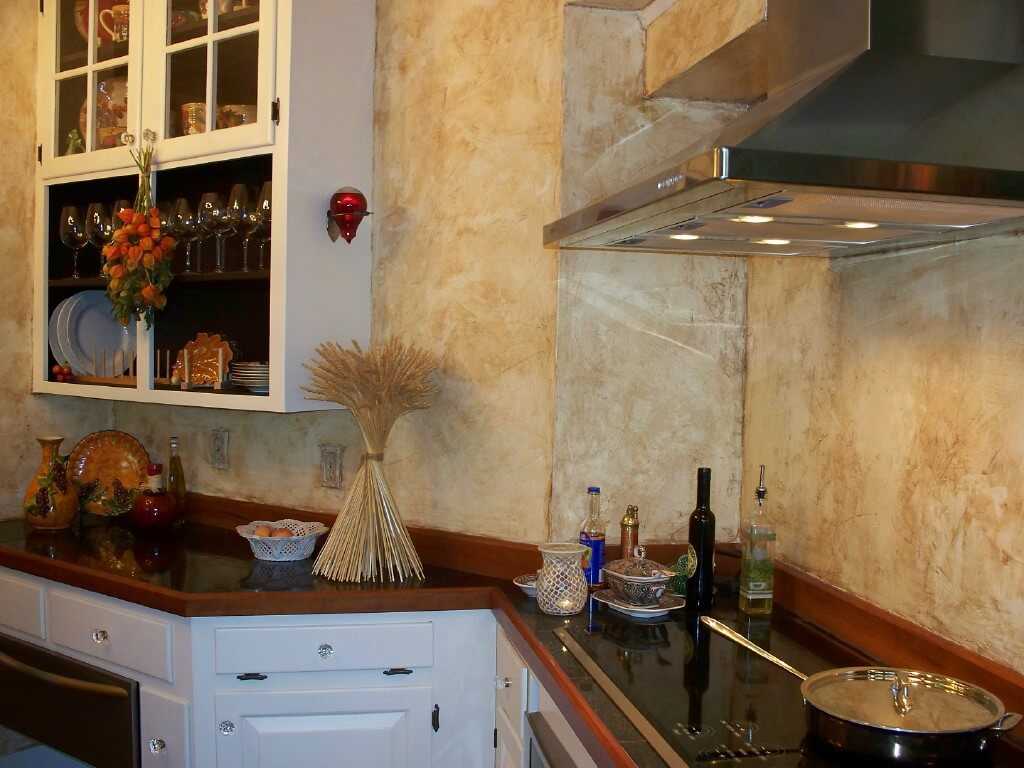
Decorative plaster in the kitchen would be a great solution. It is durable and not afraid of high temperatures.
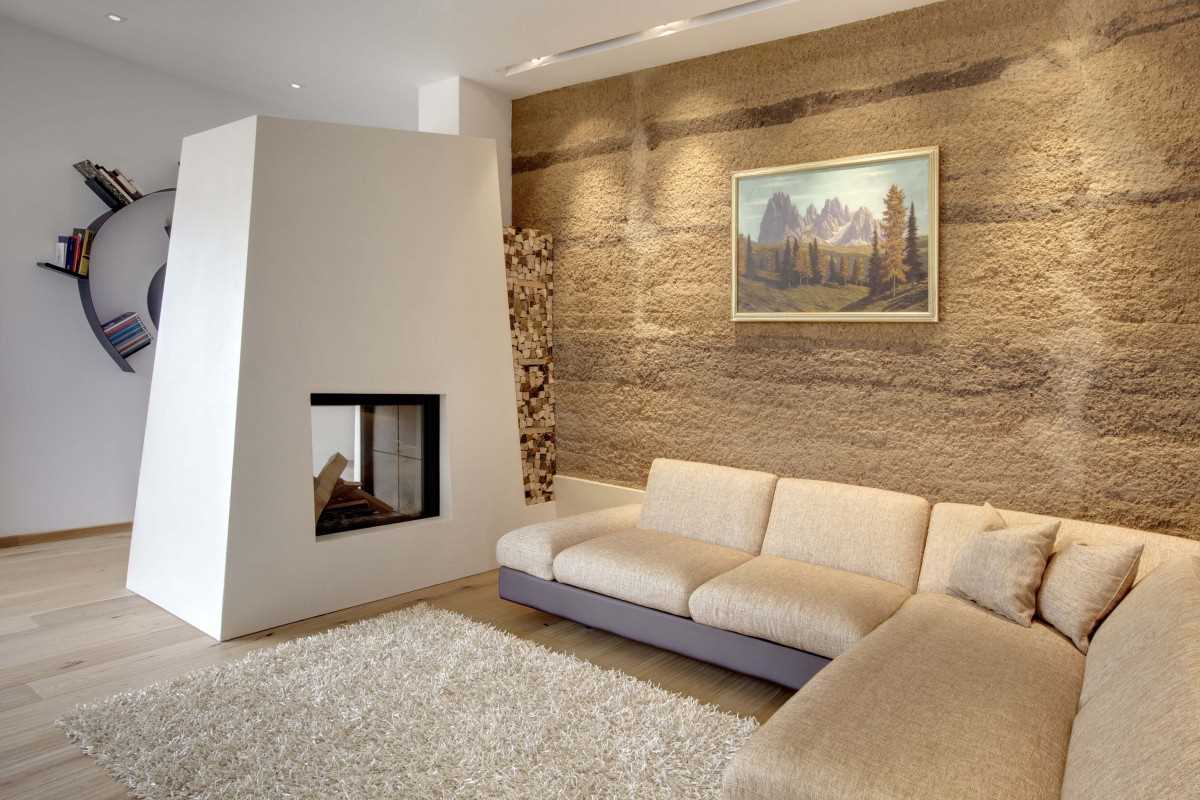
Rough finish gives the room a special atmosphere
Another plus is its availability. Luxurious decor of textured putty will look after application and painting as an expensive repair. If desired, the impression can be enhanced by coating it with varnish, which is available with different reflective properties:
- Matt
- Semi-matte.
- Glossy (maximum gloss).
Decorative plaster has high adhesion (adhesion to the base), after hardening it is difficult to remove.If there is no desire to smooth the surface of foam concrete or masonry, a mixture of decorative plaster is applied immediately after the initial treatment with a primer.
The textured surface will last for many years without losing its aesthetics. If desired, it will be possible to update the panel painting. There are also unconventional methods of painting a surface with a relief, for example, with a crushed fabric on a roller - gaps are created. The plasticity of the mixture and the availability of ready-made nozzles on the roller - work in pleasure.
The possibilities of the modern market are almost limitless, in order to offer consumers many interesting options for wall decor with putty or textured plaster.
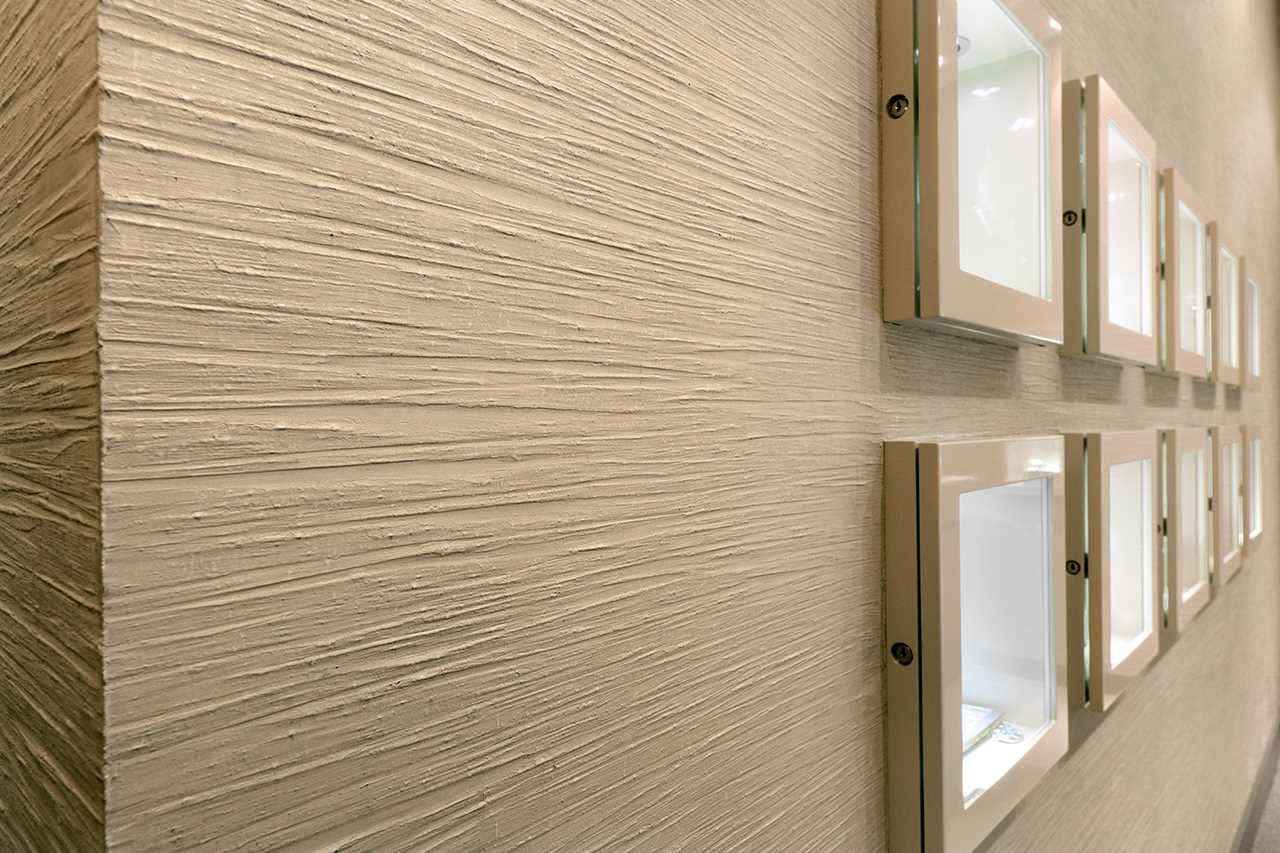
Each type of plaster has its own application technique.
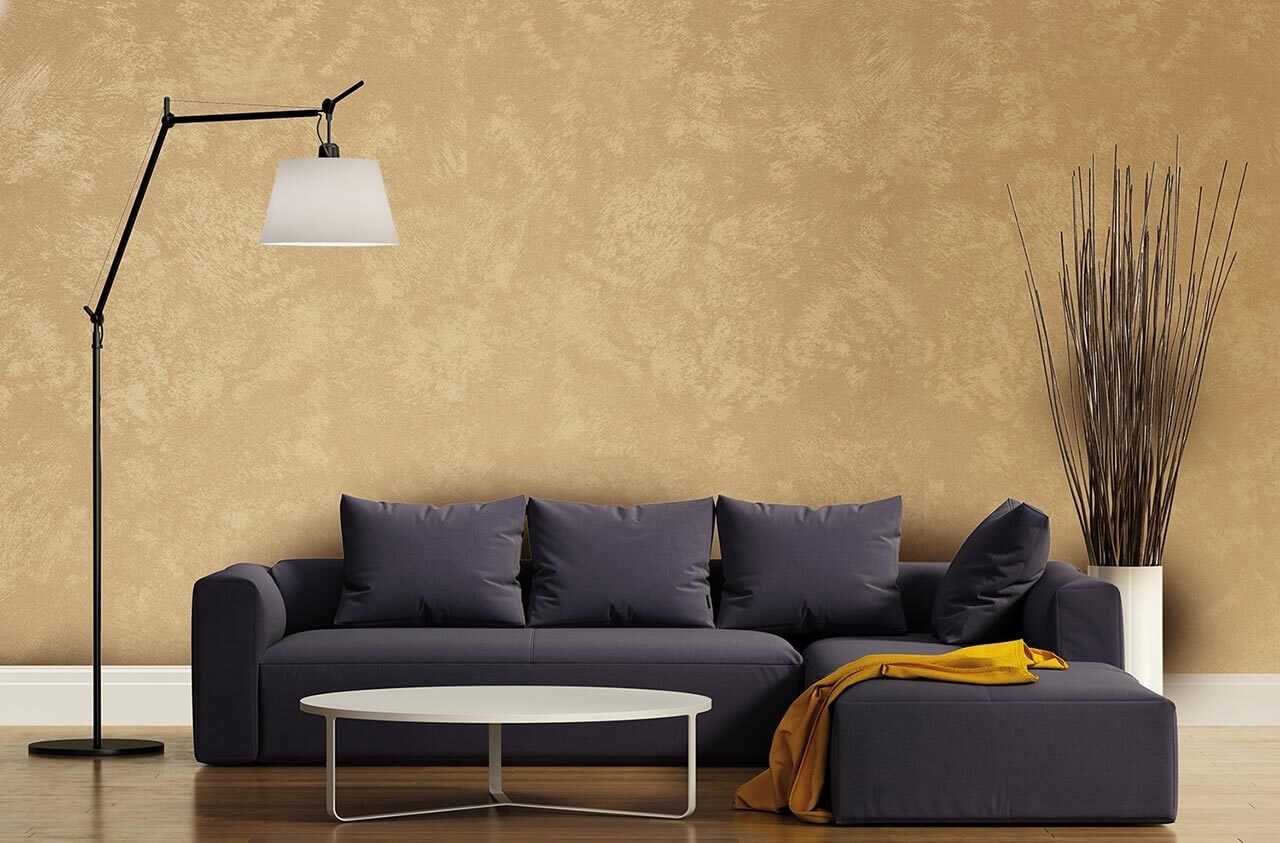
Venetian plaster will immerse you in a state of calm
TABLE
|
The basis of the mixture |
Surface texture |
|
|
1. |
Mineral "Seresit CT 35" |
Bark beetle |
|
2. |
Polymer "Seresit CT 77" |
Mosaic |
|
3. |
Mineral "Seresit CT 137" |
A rock |
|
4. |
Acrylic "Seresit CT 60, 63, 64" |
Pebble, varieties of bark beetle |
|
5. |
Silicate-latex "Seresit CT 175" |
Bark beetle options, stone texture |
|
6. |
Cement "Master" |
Fleece or Lamb |
|
7. |
"Optimist-Elite" |
"Venetian stucco" (marbled) |
|
8. |
Acrylic "Capital" |
Fur coat |
The recipe for the preparation of decorative putty plaster
Caution: When mixing some substrates, it is also possible to obtain new surface options, but it may be difficult to prepare the correct proportion.
At the seams of the gypsum plaster, a primer of maximum penetration is used or dry powder is diluted with PVA construction glue.
Based on the building mixture, you can prepare different compositions for the decoration of putty.
The most common recipe is from 3 components;
- water;
- PVA glue;
- gypsum base with additives.
This is kneaded with a construction mixer in a container of a suitable volume. Having dissolved the dry powder in water, add glue until a plastic paste with the consistency of sour cream is obtained. You need to work immediately after preparing the mixture so that it does not freeze in a bucket. Stretching the plaster with a wide spatula along the wall, they work with a roller with patterned nozzles, as in the photo.
Effective texture requires a more expensive base, which is prepared using imported Knauf and other firms finishing mixes. They are applied on top of a dried primer on a flat surface, working with a small layer of decorative plaster on the walls of the interior.

Pictures on the wall will perfectly complement the decor
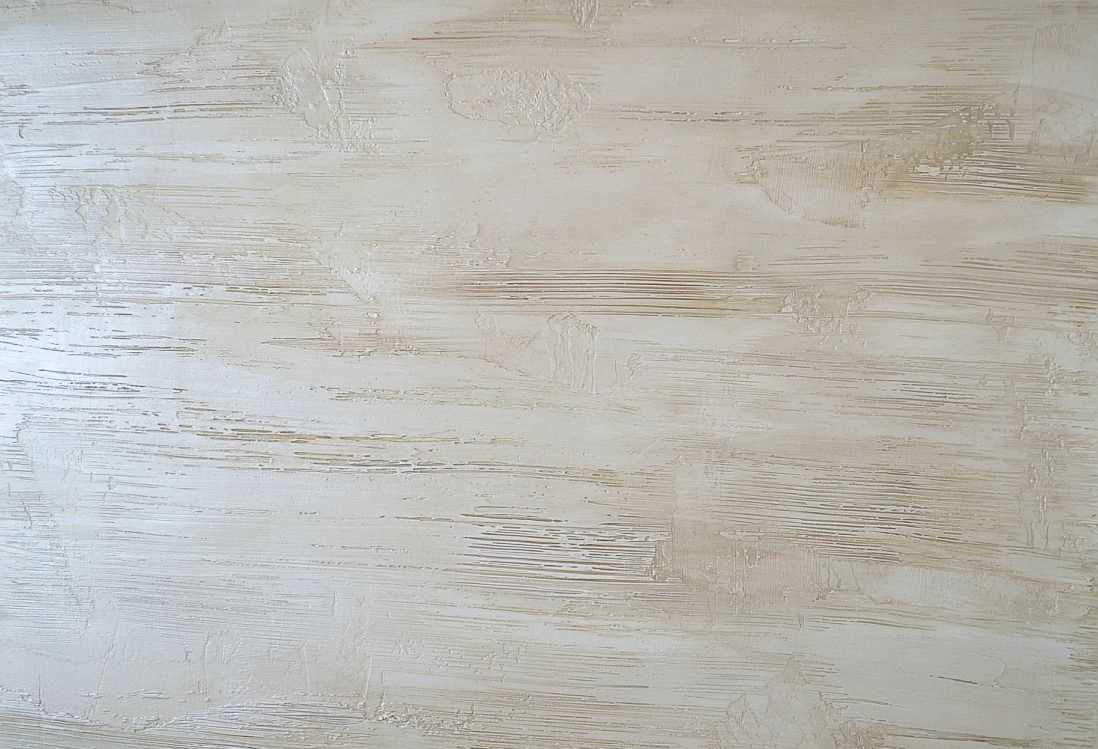
Types of plaster are completely different
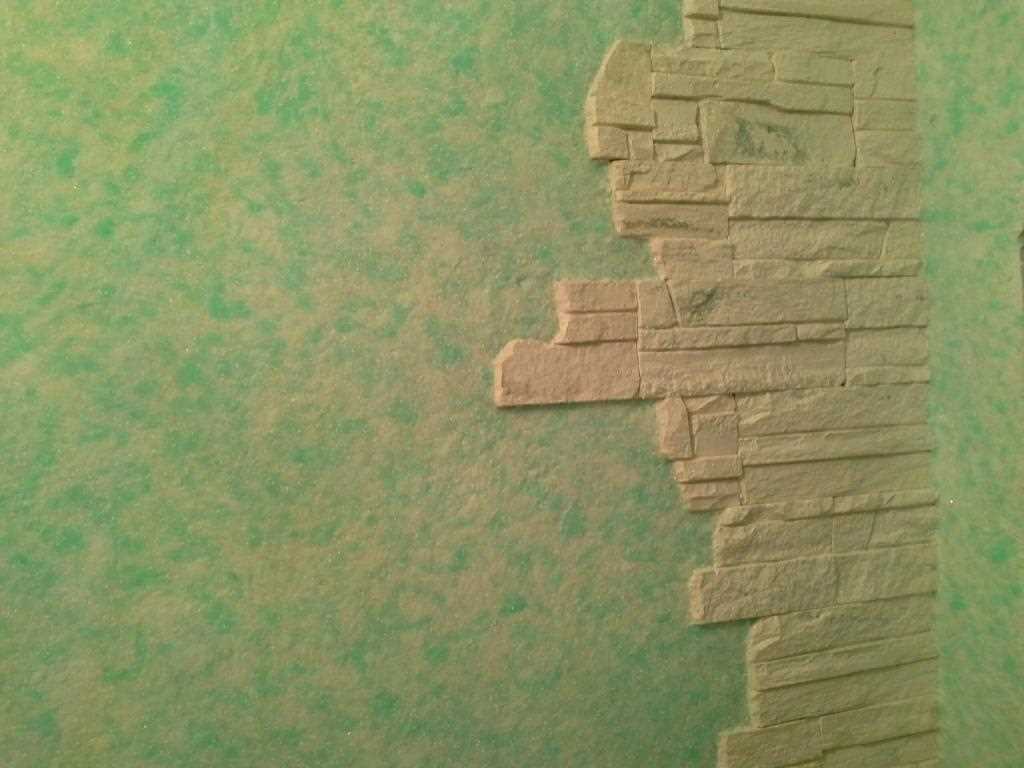
The combination with a flexible stone will be an excellent solution for a variety of interiors
The mixture should include:
- water;
- 3 parts sifted river sand;
- 3 parts of fine dry gypsum putty with elastic additives;
- 1 part polymer putty.
First, all dry components are mixed, then diluted in a container with a construction mixer.
Putty decor on the walls is also done according to another principle - a mixture with which you can create a textured coating:
- water;
- dry mix "Satengips";
- acrylic deep penetration primer.
First, the primer is diluted with water in a 2: 1 ratio, then the dry component is introduced, all this is mixed with a construction mixer until a creamy paste is obtained. They work on a prepared starting surface, creating "liquid" patterns. They quickly set, leaving a spectacular texture that can be further stained with a fluffy roller or sprayed from a spray gun.
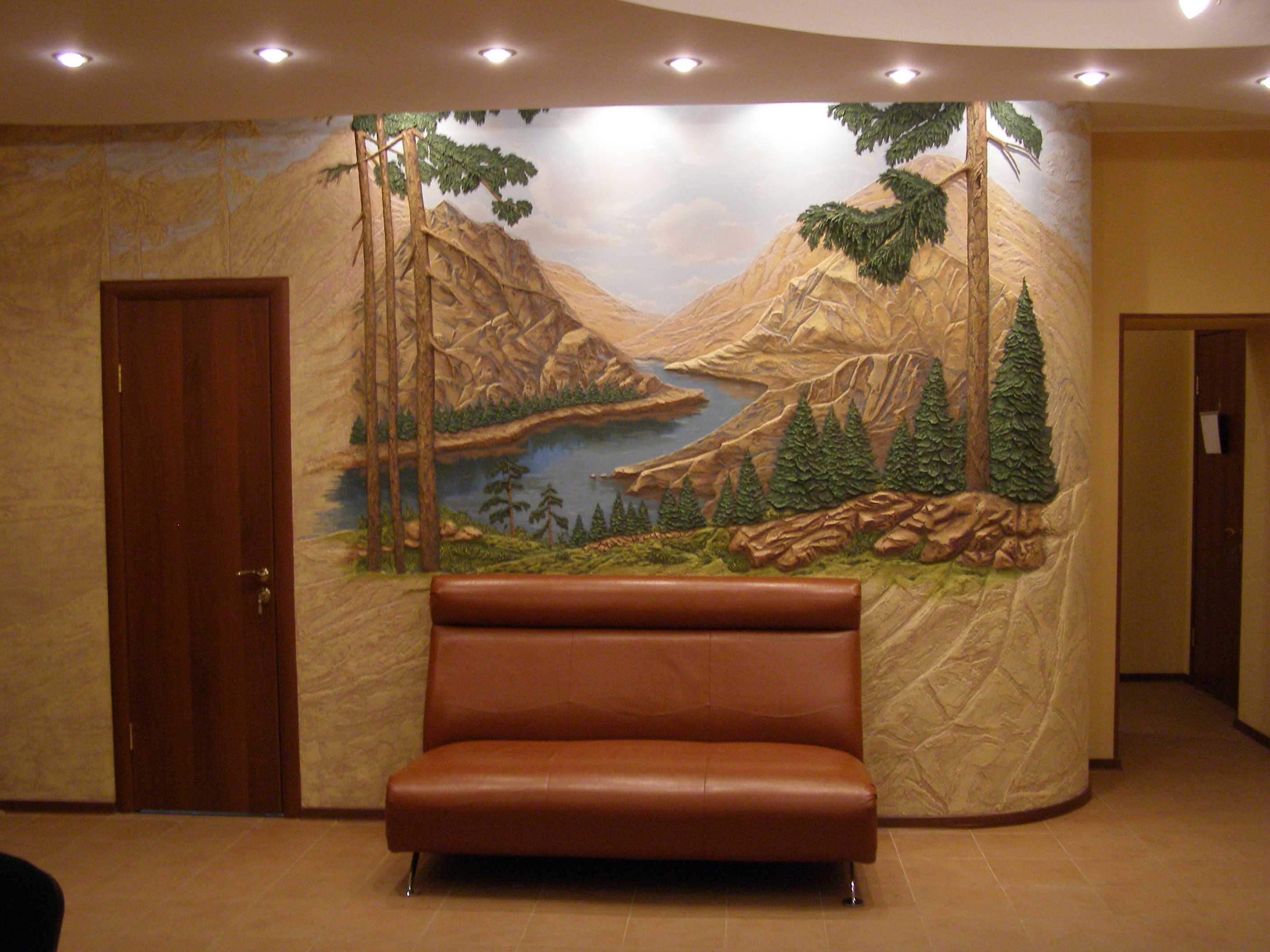
The relief pattern on the wall will catch the eye of all guests
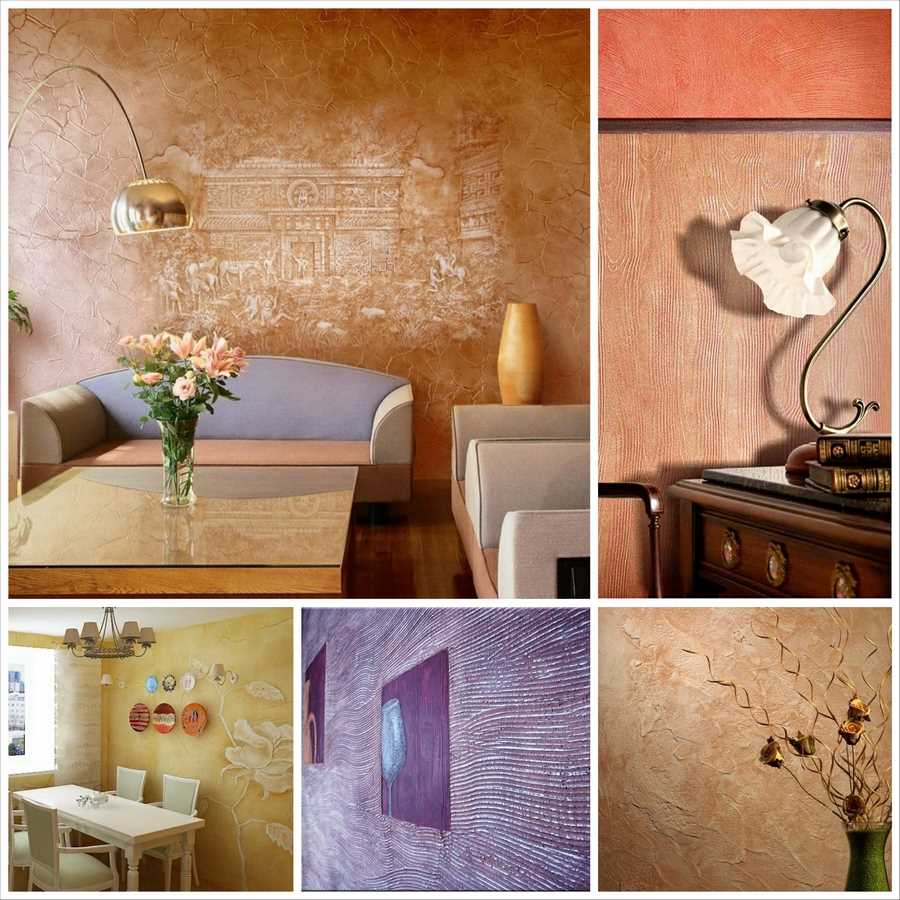
The assortment is huge. For everyone there is something different
Features of decorative plaster
Obviously, there are a lot of coating options. Experts recommend revising catalogs, where it’s easier to select your favorite wall surface from samples.But it is important to evaluate your capabilities - to obtain a complex relief, you need some experience with a spatula, trowel and roller.
Well, when there is a practice of plasterer, then the method of performing a particular decorative coating is much easier to master. For a “bark beetle,” for example, hard granules and trowel work in certain directions are needed — down, chaotically, or to the sides. This will give different terrain options. The liquid paste is modeled with a roller with different nozzles.
If there is little experience, it is easiest to work with screen rollers, which themselves squeeze a certain pattern when working through. But you need to work with them carefully, performing movements in a certain direction, so as not to disrupt the periodicity of the resulting ornament.
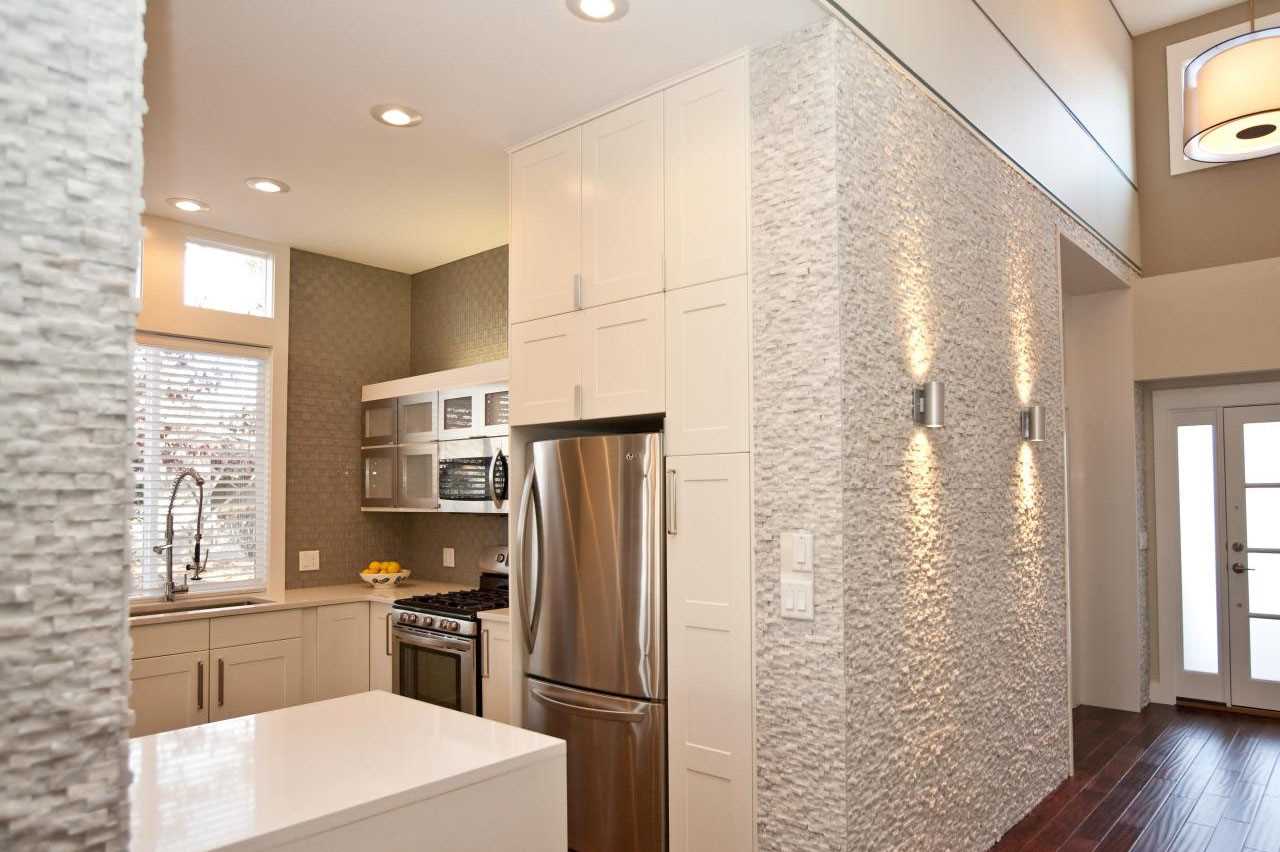
The rough surface will look unusual
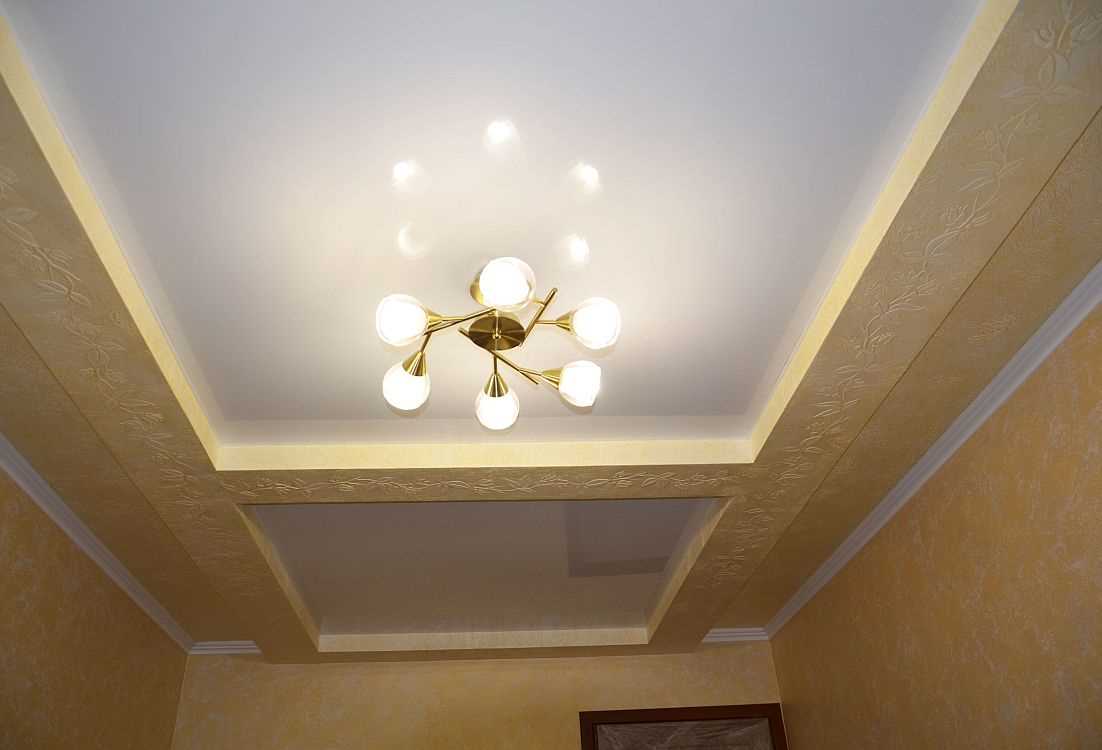
A varied application will add a twist to the interior

Complicated drawings with grape leaves will inspire
You can “sculpt” masterpieces with anything, even with your fingers, fashioning vines or fantastic flowers from plaster.
Rotating a trowel or other flat tool, you can get spectacular circles on the surface of the wall.
Small circles are easy to complement with a few movements to form roses or other images.
Some masters create their panels using “knots” of textured fabric. Having tried which “prints” various rough materials leave, on one basis it is possible to “draw” whole voluminous bas-reliefs.
Specialists also apply:
- spatulas of different sizes;
- flat elastic bands with curly slots (draw a tree trunk);
- building graters (smooth trowels and rough);
- plungers (draw circles);
- sand paper;
- faux fur nozzles;
- natural and synthetic sponges;
- wide and rough brushes, brooms and stiff brushes.
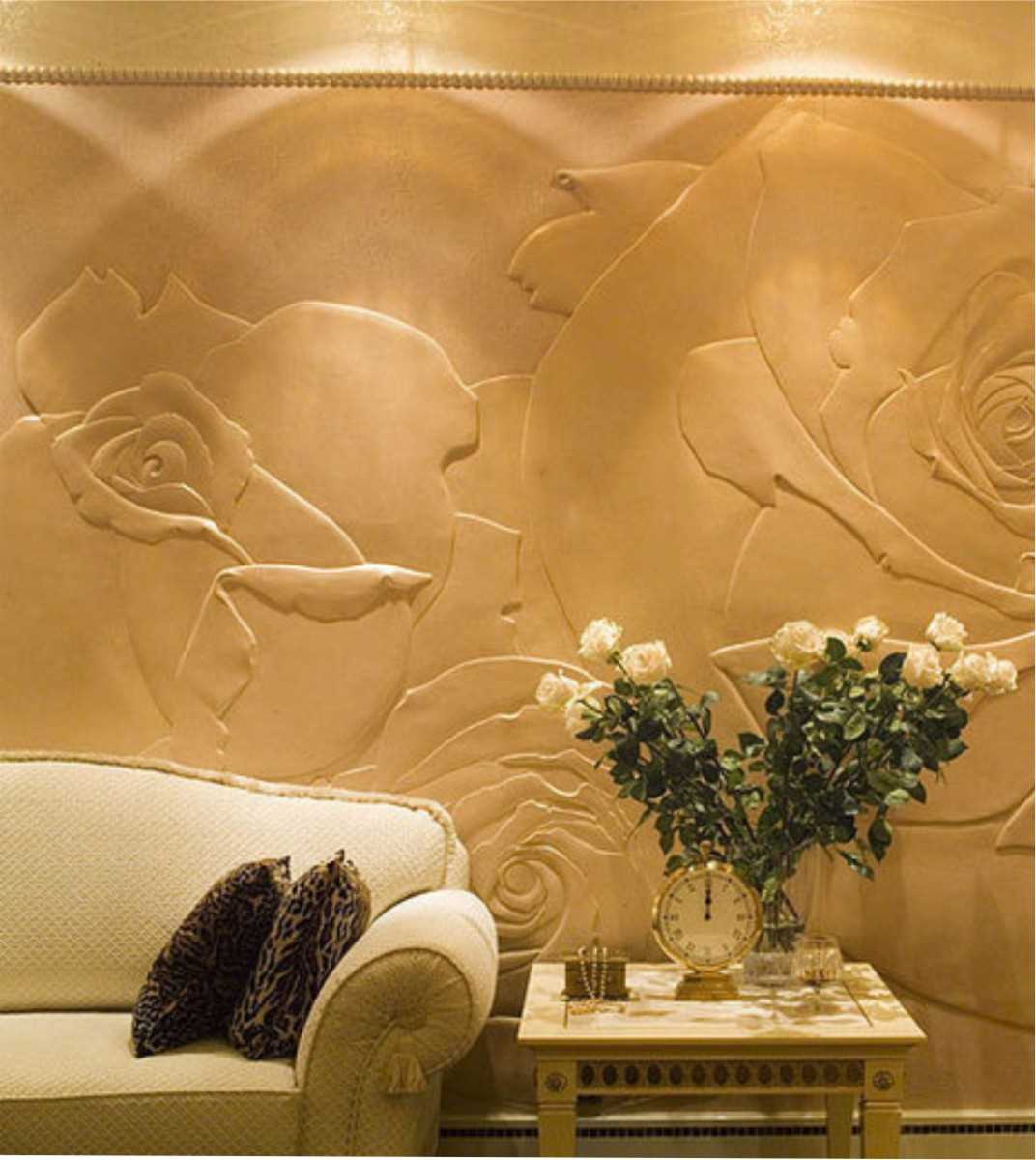
A complex relief pattern on the wall will be the center of attention in the room
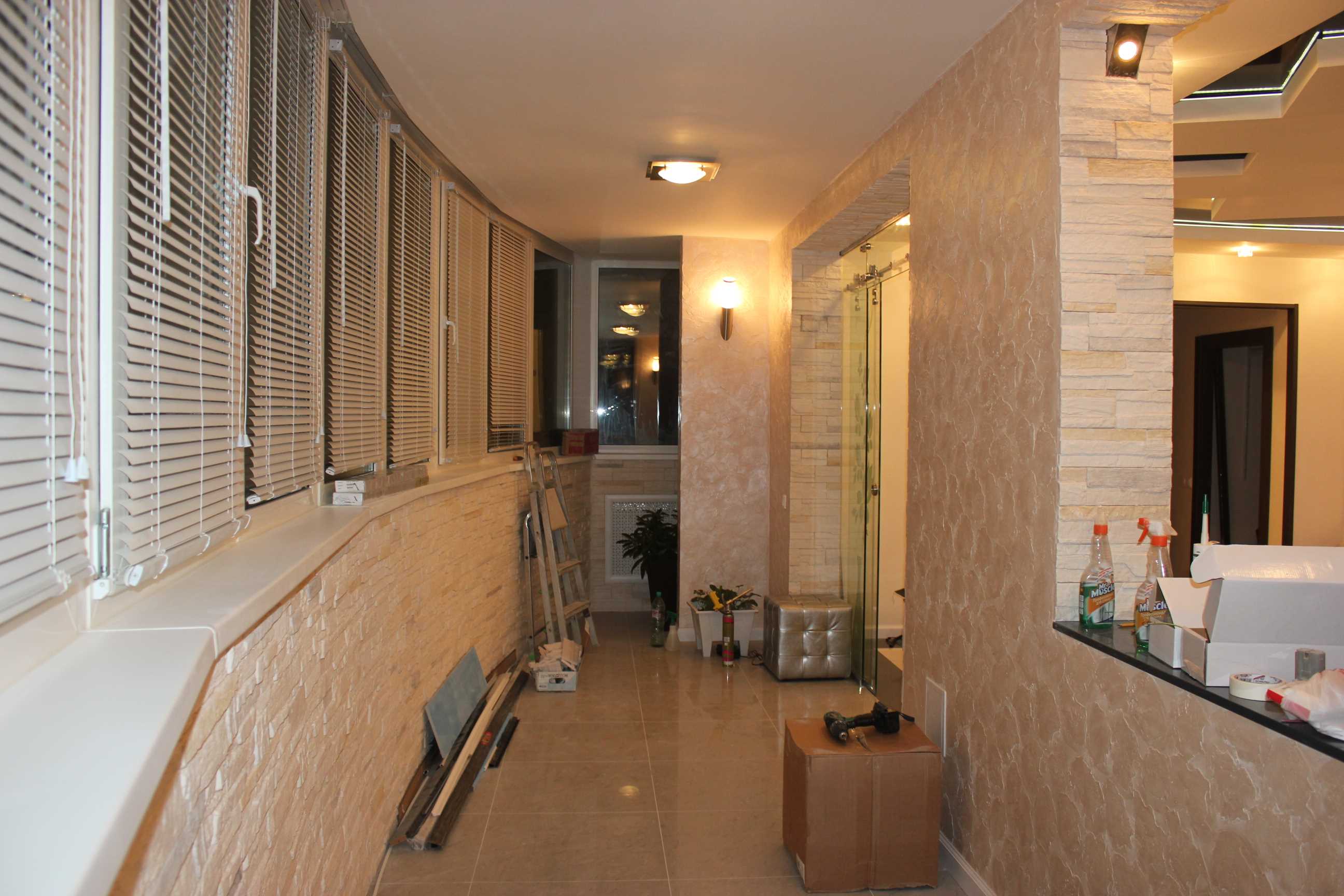
In any room, wall decoration will look great
Before plastering the wall, you need to remove all things from the room and cover the floors if they are after repair. This is necessary so that dry suspension and clods of paste do not settle on all objects. Remains of wallpaper and old crumbling putty are removed from the walls.
After filling up the cracks and preliminary preparation, you can work with decorative plaster. After the completion of the process, the vertical and horizontal are checked to eliminate defects that are most noticeable in side lighting.
You can also master the method of washing and "dry brush", use a coating of paint, wax or varnish. If there is a desire to master such technologies, watch the master class in the video.
Video: Decorative plaster

